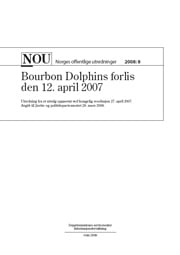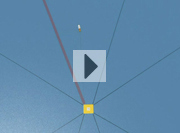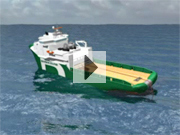Report on the loss of the “Bourbon Dolphin”
Historical archive
Published under: Stoltenberg's 2nd Government
Publisher: Ministry of Justice and the Police
Press release | No: 35 - 2008 | Date: 28/03/2008
The Ministry of Justice has received the report on the loss of the anchor-handling vessel “Bourbon Dolphin”- A special commission of enquiry chaired by appellate court judge Inger Lyng has clarified the course of events and causal factors in connection with the accident of 12 April 2007. The Commission has also considered measures to prevent a recurrence of such accidents.
The Ministry of Justice has received the report on the loss of the anchor-handling vessel “Bourbon Dolphin”- A special commission of enquiry chaired by appellate court judge Inger Lyng has clarified the course of events and causal factors in connection with the accident of 12 April 2007. The Commission has also considered measures to prevent a recurrence of such accidents.
 |
|
NOU 2008:8 - The loss of the "Bourbon Dolphin" on 12 April 2007. |
 |
|
Animation of the probable course of events that lead to the accident. |
 |
|
Animation of the probable course of events that lead to the accident. |
The Commission of Inquiry’s own press release
The Commission of Inquiry into the loss of the anchor-handling vessel “Bourbon Dolphin” on 12 April 2007 is today submitting its report to Minister of Justice Knut Storberget. Eight individuals died in the accident, while seven survived.
The Commission, which was appointed by the King-in-Council on 27 April 2007, has held five open hearings and questioned 38 witnesses, including the survivors, officers from other vessels that participated in the operation, individuals from the owner company, the shipyard, the operator company Chevron, the drillrig “Transocean Rather”, the UK consultancy firm Trident, and The Norwegian Maritime Directorate and the classification society Det Norske Veritas. In addition the Commission has collected and reviewed a large quantity of documentation related to the vessel and the operation in which the “Bourbon Dolphin” was involved when the accident happened. The Commission has also had access to underwater footage of the casualty taken straight after the capsize and of the wreck in December 2007. Members of the Commission have held a meeting with the parties’ stability experts and gained access to material that the latter had collected.
In its report the Commission points out that it is not possible to show that an individual error, whether technical or human, led to the accident; rather, a series of circumstances acted together to cause the loss of the vessel. The Commission concludes that the proximate causes of the accident were the vessel’s change of course to port (west) so as to get away from mooring line no. 3, at the same time as the inner starboard towing pin was depressed, causing the chain to rest against the outer port towing pin. This gave the chain an altered point and angle of attack on the vessel. Together with the vessel’s current load condition, the fact that the roll reduction tank was probably in use, and the effect on the vessel and chain of external forces, caused the vessel to capsize.
It emerges from the report that a number of indirect factors have contributed to the accident. A combination of weaknesses in the design of the vessel, and failures in the handling of safety systems by the company, by the operator and on the rig, are major contributory factors to the operation of 12 April 2007 coming out of control. Overall, system failures on the part of many players caused necessary safety barriers to be lacking, were ignored or were breached, so that the vessel and crew were exposed to a risk that resulted in the accident.
The Commission also makes a number of recommendations in its report with a view to preventing similar accidents in the future. Although no structural changes are proposed for existing vessels, it is recommended that in the future requirements are made for the preparation of stability calculations for anchor-handling that will be subject to approval by the authorities. In addition, requirements are proposed for formal training of winch operators and a review of requirements for survival suits, plus placement and installation of rescue floats. The Commission also proposes measures to improve the companies’ safety management systems. Risk assessments must be improved, there must be routines for overlap of new personnel and identification of the necessary crew qualifications, plus the preparation of vessel-specific anchor-handling procedures.
The Commission also points out that the operators’ rig move procedures must be made specific for every operation and be simple to understand for those operating under them. It must be insisted that the operator and rig prepare risk assessments for the entire operation before it is commenced. When the operation is executed, safety and coordination must be continuously evaluated. The Commission also proposes that an attention zone be introduced along the anchor line, indicating a maximum distance within which the vessel shall remain when running out anchors.
Contacts:
Inger Lyng, leader of the Commission, phone: 48 30 08 30
Terje Hernes Pettersen, secretary of the Commission, phone: 917 38 307 / 22 24 04 77.